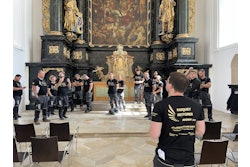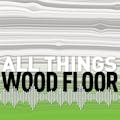The Forest Stewardship Council is no longer the only certification organization recognized by the United States Green Building Council for attaining a raw materials sourcing credit through the Leadership in Energy and Environmental Design program.
A new Alternative Compliance Path pilot credit, Legal Wood, announced April 5, would expand the USGBC’s definition of a certified source to match ASTM D7612-10, which would include the Sustainable Forestry Institute, the American Tree Farm System, the Canadian Standards Association Sustainable Forest Management Standard and the Programme for the Endorsement of Forest Certification, as well as the FSC. The ACP will apply to all LEED v4 ratings systems and all LEED 2009 rating systems.
USGBC introduced the ACP pilot to close a loophole in the current raw materials credit that required only a certain percentage of wood be FSC-certified. The rest of the material, however, did not need to be vetted, said Scot Horst, chief product officer for USGBC, in a statement. In contrast, the ACP pilot would require that 100 percent of the wood in a project is verified by a legal source, as defined by ASTM D7612-10.
Statements from the U.S. Forest Service, National Association of State Foresters, American Forest Foundation and SFI all supported the change.
“We applaud leaders from the U.S. Green Building Council, as this change across all LEED rating tools takes a stance against illegal wood and reinforces the value of certified and responsibly sourced forest products,” said Kathy Abusow, president and CEO of SFI. “SFI employs rigorous standards that ensure not only a responsibly managed forest, but also that only legal sources of fiber are brought into SFI-certified supply chains.”
However, FSC has serious concerns about the ACP. The FSC believes the ACP “functionally asserts equivalence between legal wood products from North America and those from responsibly managed forests,” according to a statement.
The expanded definition of a certified source would allow sourcing from all forestry in the U.S. and Canada, even if it involves destruction of wildlife habitat, use of chemicals or clearcuts, the statement said. “Legality is appropriate as a prerequisite in LEED. It is entirely wrong as a credit.”
The FSC also encouraged its members and supporters to ask the USGBC to limit the scope of the pilot to 100 LEED projects in order to judge the ACP impact while maintaining the reputation of LEED in the marketplace.
The FSC has been the only forest certification organization recognized by the USGBC in the program’s history, a point of contention for many in the forest products and building industries for just as long.
Critics allege that, because FSC certifies fewer acres of U.S. forests than other competing systems, builders bypass locally grown timber from sustainable means for foreign imports of FSC-certified product to satisfy LEED requirements.
Governors in at least four states have signed executive orders that government building projects must consider using wood from SFI and ATFS systems in addition to FSC, and states have passed legislation that even banned the pursuit of the FSC-specific credit. In 2004, a competing green building scheme, Green Globes, was started by the Green Building Institute, which was founded by a former timber lobbyist. A selling point was that it accepted SFI and ATFS, as well as FSC wood products.
The USGBC has looked into accepting other certification schemes before, most recently in the fourth version of LEED approved in the fall of 2014, but the idea was ultimately struck down.























